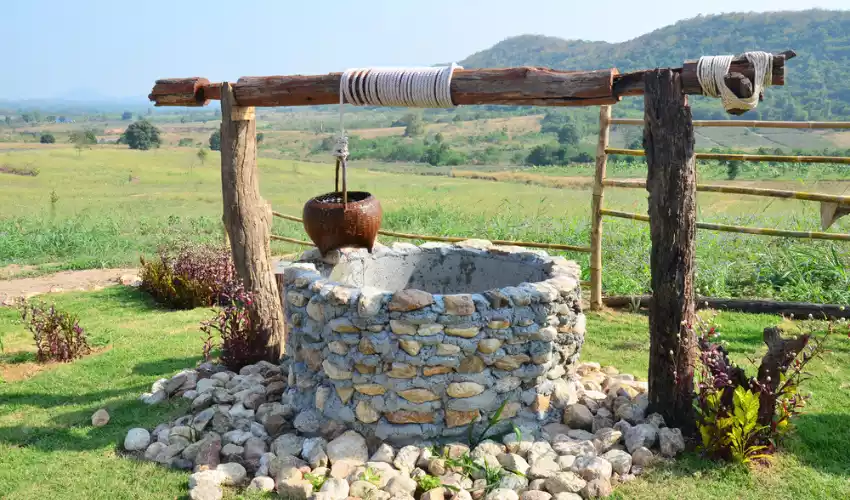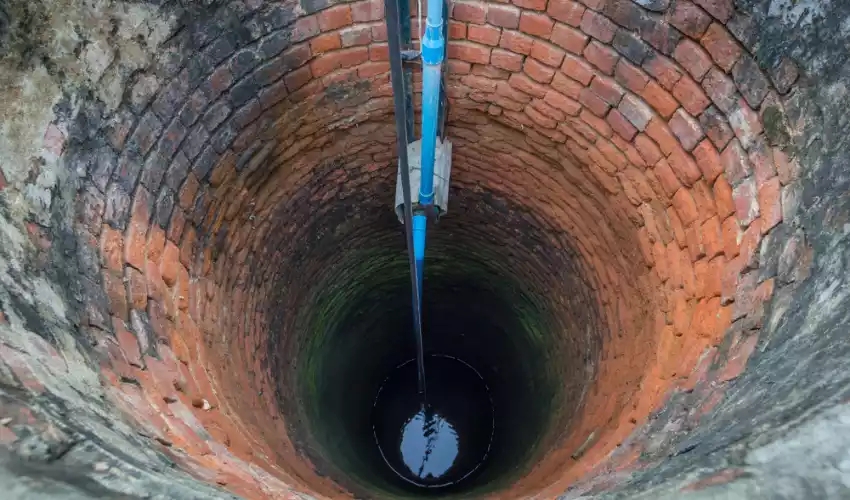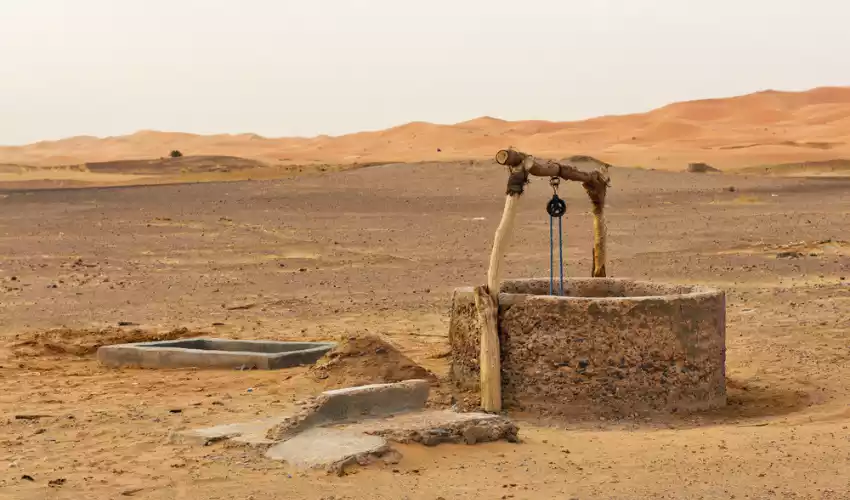The timeless architecture of water wells is a testament to our ancestral ingenuity. For thousands of years, these structures have served as a critical water source for numerous civilizations. Yet as time advances, many wells lose their functional glory, transitioning from an essential resource to an obsolete water reservoir.
Deciding what to do with an old water well is a common dilemma faced by property owners. From a safety perspective, old wells can’t be overlooked or neglected. Additionally, certain legal obligations make the appropriate handling of these structures a must. Therefore, it’s vital to consider professional evaluation, reutilization, safe decommissioning, or even well replacement.
Water wells, especially the old ones, are intertwined with several environmental and health aspects. The impetus of this article revolves around exploring these aspects, offering practical solutions to effectively address an old well, and outlining the importance of expert intervention.
Recognizing Old Wells
Before you can take appropriate action with an old well, you need to identify it. While some wells are easy to spot, others may be hidden or forgotten, camouflaged by time and changes in the landscape. Recognition is not merely about identifying the physical structure of the well, but also understanding the status of its functionality and the potential risks it poses.

Hidden Signs of an Old Well
Old wells often reveal themselves through subtle clues. You might notice a dip in the ground or a circular depression – a telltale sign of a well’s presence. Wet spots or patches of lush growth in your yard could indicate excess moisture from an underlying water source. Another red flag is an isolated pipe protruding from the ground. If your property harbors an old structure resembling a well or pump house, this may also hint at an old well’s existence. These signs should spur further investigation to either confirm or rule out the presence of an old well.
Physical Attributes of Aging Wells
Old wells manifest their age and condition through various physical attributes. Common signs include deteriorated well walls, evidence of rust, or visible structural cracks. Aging wells often deliver water at reduced rates and may provide water with a noticeable change in taste, smell, or appearance. These symptoms are usually a result of reduced structural integrity or a compromised water source. A professional well inspection can confirm the cause and guide the appropriate course of action.
Safety Risks and Concerns
Old wells, whether in use or not, can pose several safety risks. Open wells are a serious safety hazard, presenting a potential fall risk for children, pets, and even adults. Also, neglected wells might have structural instabilities that can lead to unexpected collapses. Old wells can become channels for surface contaminants to reach groundwater, posing a risk to the environment and public health. Immediate attention and remediation measures are essential to mitigate these risks.
Importance of Addressing Old Wells
Addressing old wells is more than a property management task; it’s a critical step in safeguarding environmental health and public safety. From potential groundwater contamination to direct safety risks, old wells left unattended contribute to a myriad of problems.
Environmental Impact
The environmental implications of neglected old wells are significant. These structures can create a direct path for surface contaminants to reach the aquifer below. This risk is particularly high if the well casing is deteriorated or if the well is not properly sealed. Fertilizers, pesticides, pet waste, and other surface contaminants can easily infiltrate the well, polluting the groundwater. This threatens not only your property but also the broader community that relies on the same groundwater source.

Potential Health Risks
The health risks associated with old wells come primarily from water contamination. Bacteria, viruses, nitrates, and other pollutants can infiltrate old wells, leading to waterborne diseases if this water is consumed. Additionally, if an old well is connected to your home’s water supply, contamination can spread, causing a health risk for all residents.
Legal Obligations and Implications
As a property owner, it’s important to understand the legal obligations concerning old wells. Most states require old wells to be decommissioned if they are no longer in use. Failure to comply with these regulations can result in penalties or fines. Moreover, if an old well on your property causes groundwater contamination, you could be held liable for cleanup costs.
Options for Old Wells
The presence of an old well doesn’t always spell trouble; it can present several opportunities. Depending on the well’s condition, your needs, and local regulations, you might consider a few options.
Assessment by a Professional
Regardless of what you plan to do, always begin with a professional assessment. A qualified well contractor can inspect the well’s structure, evaluate water quality, and guide your next steps. They can provide insights on whether the well can be rehabilitated, must be decommissioned, or could be repurposed.
Possible Uses for Old Wells
Contrary to what you might think, old wells can still serve a purpose. For instance, they can be used for monitoring groundwater levels, an essential aspect of local water management. Another potential use is stormwater management, where the well can act as a conduit to recharge groundwater.
Retaining the Well
If your old well is in good condition, retaining it might be a practical option. However, this choice often entails a rehabilitation process to restore the well’s functionality.
Well Rehabilitation and Maintenance
Well rehabilitation involves repairing structural damage, cleaning the well, and disinfecting it to improve water quality. Regular maintenance following rehabilitation is key to ensure the well remains functional and safe.

Adapting for New Purposes
In certain cases, an old well can be creatively repurposed. Some people transform old wells into a decorative garden feature, adding unique character to the property. Others convert them into cool storage areas or use them for irrigation purposes.
Well Decommissioning
If the well isn’t required or isn’t safe to use, decommissioning or abandonment is the safest route. It’s a responsible action to prevent safety hazards and groundwater contamination.
The Basics of Well Abandonment
Proper well abandonment involves sealing the well to prevent it from becoming a conduit for contamination. It also includes removing any well-related equipment and grading the area to match the surrounding landscape.
Safe Procedures and Practices
The well abandonment process should always be carried out by licensed contractors. They follow specific procedures and use appropriate materials to ensure the well is sealed safely and effectively.
Well Replacement
There are situations when an old well may need to be replaced, especially if it’s beyond repair or doesn’t meet your water needs.
Identifying the Need for a New Well
If you frequently face issues like reduced water yield, poor water quality, or if the well requires recurrent, expensive repairs, it may be time to consider a new well. Consulting with a professional will help determine if this is the best course of action.
Factors to Consider
When replacing an old well, consider the location of the new well, the associated costs, and the local regulations. Engaging a professional well contractor will ensure that these factors are appropriately addressed and that the new well installation complies with all requirements.
Case Studies
Real-world case studies offer invaluable insights into the various possibilities associated with handling old wells.
Successful Well Rehabilitation
A property in Nebraska with a century-old well stands testament to successful well rehabilitation. After a professional assessment, the well was rehabilitated, restoring its functionality. Today, it serves as the primary water source for the property, delivering clean, safe water.
Effective Well Decommissioning
An old well in California was posing safety risks due to its structural instability. After assessing the well, a licensed contractor successfully decommissioned it, eliminating all safety risks and potential groundwater contamination.
Innovative Well Repurposing
In Texas, an innovative property owner converted their old well into a cool storage space. With appropriate safety measures, the well became a useful and unique feature on the property.
Key Tips
Dealing with an old well may seem daunting, but it becomes manageable with a systematic approach and professional guidance.
Early Detection of Aging Wells
Regular inspection of your property, especially if you know it has a history of well usage, can help detect aging wells early. Look out for the signs mentioned above and engage professionals if you suspect there’s an old well.
Consultation with Professionals
Old well management is a task best left to professionals. From assessment to decommissioning or rehabilitation, each step requires specific knowledge and skills. Consult professionals to ensure that all actions are safe, effective, and compliant with regulations.
Legal and Safe Practices
It’s crucial to adhere to local laws and regulations when dealing with old wells. Whether you choose to rehabilitate, decommission, or replace an old well, make sure you’re aware of the legal requirements and follow safe practices.
Frequently Asked Questions
What are some signs of an old well on my property?
Signs of an old well include unexplained wet spots in your yard, an isolated pipe sticking out of the ground, or structures resembling old pump houses.
What risks are associated with old wells?
Old wells pose safety hazards and can act as a channel for surface pollutants to contaminate groundwater. They may also harbor bacteria, contributing to poor water quality.
How can an old well be safely decommissioned?
Old wells should be decommissioned by licensed professionals who seal the well, preventing any possible contamination of groundwater.
Conclusion
Old water wells are silent markers of the past that intertwine with the present. The ability to acknowledge their existence and appropriately address them is a cornerstone of responsible property management. While they pose risks, these wells also offer opportunities for creative reutilization or replacement.
The intricacies of handling old wells extend beyond the realm of mere do-it-yourself tasks. It’s a multifaceted procedure that demands professional expertise. Not only does this ensure safety, but it also aligns with local regulations and protects the environment.